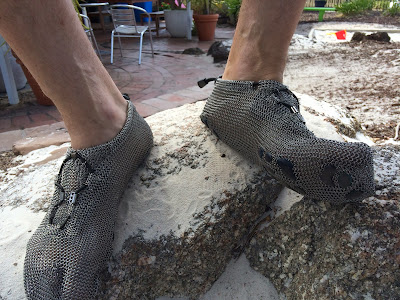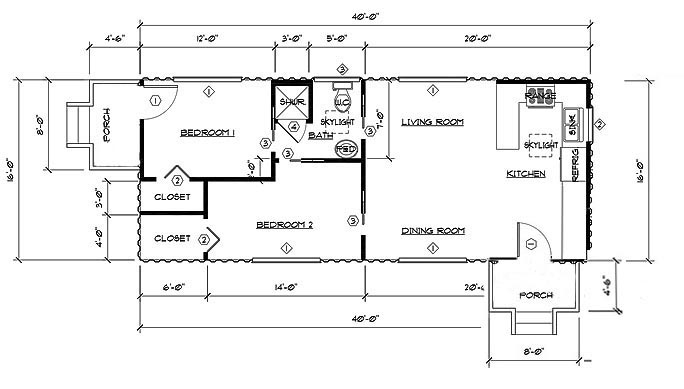 I was really happy to receive the GoST PaleoBarefoots BAMANOS gloves with Paws grip-spots, and I was really looking to try the ANTERRA versions that Jörg sent along with them. As you might have read previously, where I've talked about how I really loved the ANTERRA and PRONATIV shoes, but noted that as per the PaleoBarefoots recommendations and warnings, they don't react well to polished and artificial surfaces. The steel links just slide, with nothing to find purchase on.
I was really happy to receive the GoST PaleoBarefoots BAMANOS gloves with Paws grip-spots, and I was really looking to try the ANTERRA versions that Jörg sent along with them. As you might have read previously, where I've talked about how I really loved the ANTERRA and PRONATIV shoes, but noted that as per the PaleoBarefoots recommendations and warnings, they don't react well to polished and artificial surfaces. The steel links just slide, with nothing to find purchase on.
Adding the Paws grip-spots immediately ended this issue, providing immediate regular shoe traction with surprisingly little loss of tactile response.
They added some pressure points on the foot that had not been present in the "bare-sole" version, but this was not unpleasant by a long shot. 
The area taken up by the Paws is slightly larger on the links than on the ground contact, and only very slightly permeate into the shoe, essentially imperceptibly. This means that you still have all the flexibility, and articulation of the originals with none of the slip-sliding.
 I also found that the extra buffer the Paws provided gave me a little relief from the heat of the Australian summer, when standing still on hot surfaces. It was also interesting to note that the placement of these spots matched very well to the shape and contours of my feet. It's obvious after wearing them that a lot of care and thought had been out into the shape and placement of the grip-spots, and it was more apparent than in the BAMANOS, because of how they traced the contact points of the sole.
I also found that the extra buffer the Paws provided gave me a little relief from the heat of the Australian summer, when standing still on hot surfaces. It was also interesting to note that the placement of these spots matched very well to the shape and contours of my feet. It's obvious after wearing them that a lot of care and thought had been out into the shape and placement of the grip-spots, and it was more apparent than in the BAMANOS, because of how they traced the contact points of the sole.
This version certainly improves upon an already eye-catching and effective barefoot shoe system, with very little change to the basic function and draw cards of the originals.
After many kilometers of running and both beachside and urban walking in them throughout the summer, I can confidently say that these are the best yet, and the adjustment period was minutes at most.
Given that the silicone rubber is melded into the rings directly, I would expect that the Paws will last for many years, wearing down and degrading slowly as I slog through rough terrain and gritty city streets, and will eventually need to be resurfaced.
 However, even then, the stainless steel of the primary shoes will go on working as indefinitely as any of the classic versions. No structural integrity was lost in the adding of the grip-spots, that's for sure.
However, even then, the stainless steel of the primary shoes will go on working as indefinitely as any of the classic versions. No structural integrity was lost in the adding of the grip-spots, that's for sure.
I very much look forwards to completing my next Tough Mudder in these and with the BAMANOS gloves.
The combination of the steel and silicone gripping surfaces significantly improve the disaster situation practicality and all-round wearing of this unique kind of footwear.














































